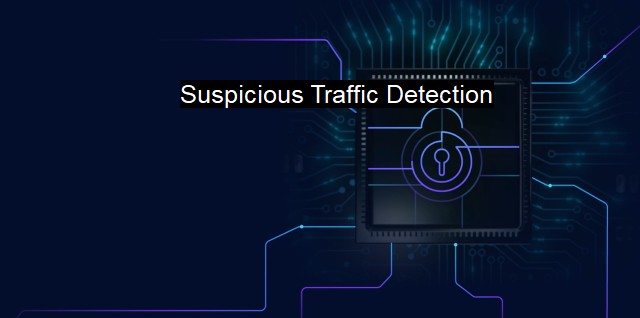What is Suspicious Traffic Detection?
The Importance of Suspicious Traffic Detection in Cybersecurity Systems
"Suspicious Traffic Detection" is a fundamental concept in the realm of cybersecurity and antivirus solutions, which involves identifying traffic patterns that are anomalous or out of the ordinary. it is the process of discerning potentially dangerous or harmful digital behaviour that might pose a threat to network security. Notably, it’s a key measure in the practice of maintaining a secure online environment.The term "traffic" refers to the activities conducted over a computer network, typically orchestrated by data packets transported between devices. This could involve any digital activity from device connectivity, surfing the internet, emails, or exchanging files.
In a healthy, secure digital environment, traffic should adhere to a certain protocol and maintain a level of predictability. Consequently, anything unusual or out of the normal order can account for 'suspicious traffic'. This can encompass various anomalies like an unexpected rise in outgoing connections from a particular workstation, any unwarranted activity during non-business hours, or repeated failed attempts on a password-protected resource.
The detection of such suspect activity is pivotal in mitigating potential cybersecurity threats as it allows timely intervention to prevent harm. Considering that modern digital threats aren't limited to viruses, but also encompass hacker attacks, data breaching, phishing, malware, and similar attacks, detecting suspicious traffic is essentially a digital immune system in safeguarding online operations.
Detecting suspicious traffic is performed by various sophisticated systems, with the main one being an Intrusion Detection System (IDS). This is a device or software application that monitors networks 24/7 for potential threats, such as unauthorized access, system functionality modifications, or policy breaches.
Artificial intelligence is one technological advancement that has seen profound use in this sector. Machine learning algorithms realize traffic pattern identification and aid in the prompt discernment of regular activities from malicious ones. Data is continuously gathered, enabling the system to learn and adapt to subtle changes in patterns, thereby promptly identifying any false traffic.
Suspicious Traffic Detection plays an indispensable role in Incident Response (IR), a crucial component of any cybersecurity strategy. IR is a process by which an organization approaches and manages any potential cybersecurity breach. Early detection allows the organization to set in motion their IR plan effectively, mediate the effect of any incident, minimize damage and loss of data, thus ensuring business continuity.
Firewalls and antivirus software are other primary methods that work in conjunction with Suspicious Traffic Detection. Firewall functions by limiting access to/opening from your network while antivirus software protects individual devices from unwanted programs and files. These together with Suspicious Traffic Detection lay a secure ground in an organization's cybersecurity approach.
But the process isn’t totally without challenges. Network traffic usually involves massive amount of data and traffic scrutinization can turn into a resource-intensive process. There's also the risk of false-positive alarms that can lead to unneeded panic and wastage of precious time and resources.
Suspicious Traffic Detection is immensely beneficial for the integrity of cybersecurity and the fight against the escalating problem of cybercrime. Fearlessly, given the speedy evolution of the digital world and its inseparable intersection with our daily lives, the development of a dynamic, proficient, and real-time Suspicious Traffic Detection mechanisms is imperative. It’s about investing in tools and technologies that understand the normal behaviour of network traffic and being ready to act when anomalies surface. thereby safeguarding digital integrity.

Suspicious Traffic Detection FAQs
What is suspicious traffic detection?
Suspicious traffic detection refers to the process of identifying and flagging network traffic that appears to be malicious or abnormal. It is an important tool in cybersecurity, as it can help prevent cyberattacks and protect against unauthorized access to sensitive information.How does suspicious traffic detection work?
Suspicious traffic detection works by analyzing network traffic for patterns and behaviors that are characteristic of malicious or abnormal activity. This can include things like unusual traffic volume, patterns of communication between different devices or users, and attempts to access restricted resources. The system may use machine learning algorithms and other advanced techniques to automatically identify and respond to potential threats.What are some common indicators of suspicious traffic?
Some common indicators of suspicious traffic include high network traffic volume, unusual patterns of communication between devices, repeated failed login attempts, attempts to access restricted resources, and malware downloads or uploads. Additionally, traffic that originates from known malicious IP addresses or domains is also considered suspicious.What are the benefits of using a suspicious traffic detection system?
Using a suspicious traffic detection system can provide several benefits, such as preventing cyberattacks, protecting sensitive information, and minimizing the risk of data breaches. By identifying and responding to potential threats in real-time, these systems can help organizations stay ahead of cybercriminals and minimize the impact of attacks. They can also provide valuable insights and analytics to help improve network security and identify areas for improvement| | A | | | B | | | C | | | D | | | E | | | F | | | G | | | H | | | I | | | J | | | K | | | L | | | M | |
| | N | | | O | | | P | | | Q | | | R | | | S | | | T | | | U | | | V | | | W | | | X | | | Y | | | Z | |
| | 1 | | | 2 | | | 3 | | | 4 | | | 7 | | | 8 | | |||||||